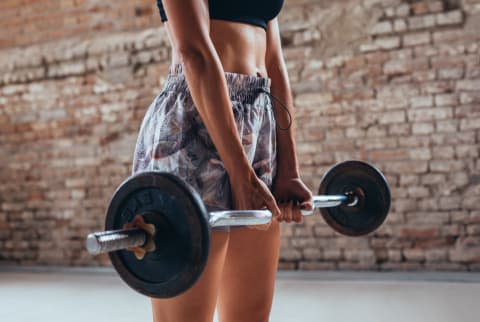Advertisement
Why You Should Focus On Movements (Not Muscles) During Your Workouts


Next time you see a toddler reach down to pick something up, pay attention to the way they do it: Heels remain flat, butt to the floor, chest up, and back arched. Essentially, they're exhibiting a perfect squat—and they do it instinctively.
Yet when an able-bodied adult does the same task, most of the time it involves bending at the hips, rounding your back, and putting your spine in a compromised position. The key take-away here: That toddler is displaying a primal, fundamental movement that our bodies are literally designed to perform.
Kinesiology (the academic discipline that guides our understanding of exercise) is the study of movements—not the study of muscles. But somewhere along the way, our approach to exercise shifted from the former to the latter. And this muscle-focused approach might be what's keeping you from achieving your goals. Here's why.
The case for switching to movement patterns.
Not so long ago, lifting weights was actually very uncommon. But around the mid-20th century, our knowledge of human performance evolved, and it became apparent that resistance training was key to optimizing it2. Nowadays, training with weights has gone from obscure to ubiquitous, crossing over from professional sports and into the mainstream.
But while experienced athletes train to become more efficient within a certain movement3, today's fitness industry prioritizes the muscles that are performing these movements—think biceps, triceps, quads, glutes, etc. But if you can instead structure your workouts by patterns of movement—horizontal push, hip hinge, anti-lateral flexion—you will reach your goals faster and more efficiently. Not to mention you're more likely to avoid injury because these movements are the most natural for us.
How to make the most of your workouts.
So how do you apply this to your own workout routine? That part is simple. Literally strip down every exercise to its basic pattern of human movement—think "vertical press" instead of "shoulders"; think "hip hinge" instead of "deadlift."
Here's a sample full-body workout that puts this principle into action:
Part I: Hip flexion
- Dumbbell goblet squat: 3 sets of 10 reps
- Bulgarian split squat: 3 sets of 12 reps (each leg)
- High box dumbbell step-up: 3 sets of 12 reps (each leg)
Part II: Horizontal push/pull
- Lying single-arm chest press: 3 sets of 10 reps (each arm)
- Bent-over single-arm row: 3 sets of 12 reps (each arm)
- (Circuit) standing resistance band chest press + standing resistance band row: 3 sets of 12 reps each
See? This is nothing outrageously different from your normal routine, but if you can shift your mindset to think of these exercises as a pattern of movement (versus targeting a specific muscle), you'll see better results—both health-wise and performance-wise—in the long run, and you'll be well on your way to hitting your goals.
If strength training still feels intimidating (because if you're a beginner, it totally can be), don't worry. There are so many online tutorials, books, and trainers you can learn from—just make sure any advice you take is from a source you trust.
Need more inspo? Read about how (and why) these five female trainers started strength training, or if you're ready to jump in, try these compound movements.